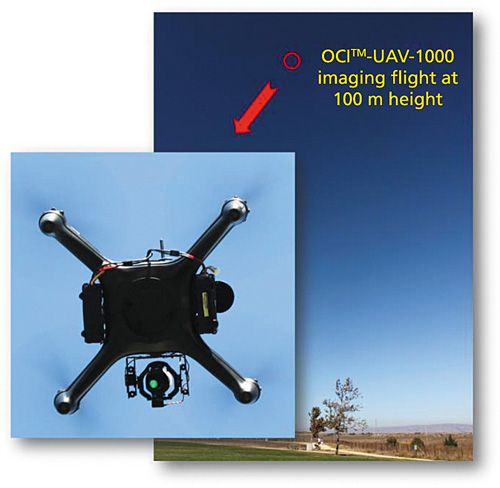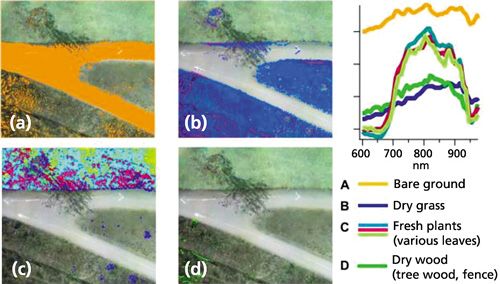Aerial Hyperspectral Imaging by BaySpec OCI Hyperspectral Imagers
BaySpec’s OCI-UAV hyperspectral imagers are ultra-compact, easily deployable, high-performance hyperspectral cameras designed specifically for use on small unmanned aerial vehicles (UAVs), to monitor the details of spatial, temporal, and spectral representation of ground objects.
BaySpec’s OCI™-UAV hyperspectral imagers are ultra-compact, easily deployable, high-performance hyperspectral cameras designed specifically for use on small unmanned aerial vehicles (UAVs), to monitor the details of spatial, temporal, and spectral representation of ground objects. It is available in both push-broom and snapshot versions. These cameras cover VNIR wavelength range (custom range available upon request), which is sufficient for varieties of aerial spectroscopic imaging applications such as vegetation characteristics (for example, precision agriculture). Spectral sensing, once integrated on low-cost UAVs, rapidly accelerates application areas such as automatic ground surveys, vegetation development stages studies, and more.
Traditionally, widespread adoption of hyperspectral imaging by various industries has been limited due to the lack of fast, compact, reliable, and cost-effective model imagers. To enable the transfer of applications from the lab to industry, BaySpec has overcome the hurdles to miniaturize the instrument in a handheld form. The result is a fully self-contained, highly reliable unit incorporating a hyperspectral image sensor, on-board computer, and battery weighing less than one pound in a volume not much larger than a modern cellular phone. Currently, BaySpec packages a multi-motor UAV platform consisting of an autopilot and an active vibration-isolation gimbal system for its hyperspectral imagers (Figure 1).

OCI™-UAV-1000 push-broom imagers produce high resolution hyperspectral measurements, up to 100 bands and up to 1 cm ground resolution (Figure 2).

The real power of hyperspectral imaging is that the continuous and wide-range spectra from each pixel can be used to characterize the materials quantitatively with high accuracy. The abundance of spectral information enables maximum analytical power and automatic chemometrics algorithms to segment the images according to their material characteristics. These spectral signatures enable identification of the materials for quantitative applications, such as forensic analysis, precision agriculture (Figure 3), food processing, biomedical, mineralogy, surveillance, astronomy, and environment analysis, to name a few.


BaySpec, Inc.
1101 McKay Drive, San Jose, CA 95131
tel. (408) 512-5928, fax (408) 512-5929
Website: www.bayspec.com

.png&w=3840&q=75)

.png&w=3840&q=75)



.png&w=3840&q=75)



.png&w=3840&q=75)